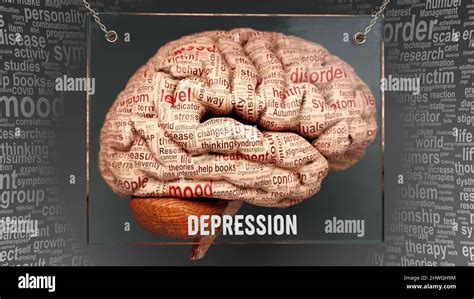Depression is a topic as multifaceted as the human brain itself. As we delve into its etiology, it’s crucial to consider not just the biochemical aspects but also the societal and technological forces at play. As the discussion on platforms like Quanta Magazine suggests, the rise of depression is a confluence of nuanced medical, social, and cultural factors. From what occurs within the brain’s neurochemistry to the external pressures of the modern world, this complexity makes targeted treatment all the more challenging.
One interesting speculation in the comments section touches on the potential for Large Language Models (LLMs) to develop depressive symptoms if they were to acquire the capacity for introspection. While this might sound far-fetched, it underscores a broader point: the dichotomy between intelligence and emotional well-being. Artificial Intelligence, stripped of agency and human-like experiences, might never face the neurological shadows of depression. And yet, as some commenters noted, adding a reward framework might provide some semblance of emotional stress in these systems.
On a more traditional note, the biomedical perspective of depression often hinges on neurotransmitters like serotonin and dopamine. For years, medications such as Selective Serotonin Reuptake Inhibitors (SSRIs) have been the cornerstone of treatment. Yet, the public discourse highlights the pitfalls of this approach, including side effects like suicidal ideation and sexual dysfunction. To dig deeper into this discussion, Johann Hari’s ‘Lost Connections’ offers a profound look at this chemical vs. situational debate, emphasizing that one’s environment plays a monumental role in mental well-being. As one commenter poignantly observed, ‘chemical imbalances vs life situation’ often reflect the dual fronts in tackling depression.
The advancements in understanding the neurological basis of depression are undeniable, but equally fascinating are the societal contributions to this malaise. The internet and social media stand as proverbial double-edged swords. On one hand, they foster global connectivity, while on the other, they bombard individuals with unceasing streams of information and comparison. Engagement-driven algorithms amplify negative content due to its inherent virality, as per human nature’s inclination toward fear-driven stimuli. Terms like ‘doomscrolling’ encapsulate this experience, describing the tendency to compulsively scroll through dystopian news at the cost of one’s mental health.
Another socially charged aspect is the dramatic shift in the support systems surrounding individuals today compared to yesteryears. The disintegration of close-knit communities and extended family structures has left many feeling isolated. Factors like urbanization and technology have fundamentally reshaped human interaction. The COVID-19 pandemic exacerbated this isolation, turning screens into primary windows to the world. Consequently, many young people feel unprepared to handle life’s harsh realities, given the lack of a consistent framework for coping. The decline in religious affiliations, which previously offered solace and structure, is another contributing factor.
Finally, understanding the broader economic and political landscape adds yet another layer. Commenters mentioned the growing awareness of social injustices, economic disparities, and political turmoil as modern stressors that previous generations might have either ignored or accepted as the norm. Today’s youth are acutely aware and hence more affected. They are also less willing to accept these issues at face value, which while a sign of progress, also increases their mental burden. So while we continue to decipher the biochemical codes of depression, the socio-cultural environment remains a critical determinant of mental health.
In conclusion, the rising trend of depression cannot be attributed to a single cause. Instead, it requires a multidimensional approach that combines medical treatments, socio-cultural awareness, and new support systems to build a resilient framework. Recognizing the many faces of depression is the first step in addressing it comprehensively, one that acknowledges both the individual suffering and the larger societal contributions. To cope with the rigors of modern life and the digital age, it’s not just the mind but the context in which it operates that needs our focused attention.


Leave a Reply